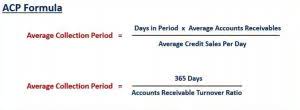
When a company knows both its marginal cost and marginal revenue for various product lines, it can concentrate resources on items where the difference is the greatest. Instead of investing in minimally successful goods, it can focus on making individual units that maximize returns. The change in total expenses is the difference between the cost of manufacturing at one level and the cost of manufacturing at another. For example, management may be incurring $1,000,000 in its current process. Should management increase production and costs increase to $1,050,000, the change in total expenses is $50,000 ($1,050,000 – $1,000,000). This understanding of what the marginal functions model should make sense to us.
- Marginal cost is the change in the total cost of production upon a change in output that is the change in the quantity of production.
- We can see small range of increasing marginal returns in the figure as a dip in the marginal cost curve before it starts rising.
- Marginal cost is a production and economics calculation that tells you the cost of producing additional items.
- Figure 7.7 graphically shows the relationship between the quantity of output produced and the cost of producing that output.
- It goes the opposite way when the marginal cost of (n+1)th is higher than average cost(n).
Formula Preparation
The marginal cost formula is defined as the ratio of change in production cost to the change in quantity. Mathematically it can be expressed as ΔC/ΔQ, where ΔC denotes the change in the total cost and ΔQ denotes the change in the output or quantity produced. The marginal cost at each production level includes additional costs required to produce the unit of product. Practically, analyses are segregated into short-term, long-term, and longest-term. At each level of production and period being considered, it includes all costs that vary with the production level. Other costs are considered fixed costs, whereas practically, there is inflation, which affects the cost in the long run and may increase in the future.
- The target, in this case, is for marginal revenue to equal marginal cost.
- Both marginal cost and marginal revenue are important factors determining the cost and selling price of the commodities to maximize profits.
- It may vary with the number of products provided by the company.
- As a financial analyst, you determine that the marginal cost for each additional unit produced is $500 ($2,500,000 / 5,000).
- Production of public goods is a textbook example of production that creates positive externalities.
What is the Marginal Cost Formula?
In this situation, increasing production volume causes marginal costs to go down. At some point, the company reaches its optimum production level, the point at which producing any more units would increase the per-unit production cost. In other words, additional production causes fixed and variable costs to increase. For example, increased production beyond a certain level may involve paying prohibitively high amounts of overtime pay to workers.
How to get the marginal cost of a business?
A change in fixed cost would be reflected by a change in the vertical distance between the SRTC and SRVC curve. Any such change would have no effect on the shape of the SRVC curve and therefore its slope MC at any point. The changing law of marginal cost is similar to the changing law of average cost. They are both decrease at first with the increase of output, then start to increase after reaching a certain scale.

- The company has determined it will cost an additional $400 to manufacture one additional bike.
- Marginal cost represents the incremental costs incurred when producing additional units of a good or service.
- Firms compare marginal revenue of a unit sold with its marginal cost and produce it only if the marginal revenue is higher or equal to the marginal cost.
- Marginal cost is the expenses needed to manufacture one incremental good.
- We now have all the information necessary to determine a firm’s costs.
- When the MC curve reaches its minimum level, it indicates that the company has reached its optimal level of production, and every additional unit after that could be a reason for an increase in the losses.
Let’s say it has cost the company $500,000 to manufacture 1,000 exercise bikes. Consider the warehouse for a manufacturer of landscaping equipment. The warehouse how to get marginal cost has the capacity to store 100 extra-large riding lawn mowers. The margin cost to manufacture the 98th, 99th, or 100th riding lawn mower may not vary too widely.
Initially, as production increases, Marginal Costs may decrease due to efficiencies gained. Think of a factory coming online and producing more and more units. As the number of units being produced by that factory grows, the cost of the factory (along with all the other costs) is divided by a larger number, causing the Marginal Cost to fall. But as production continues to increase, eventually new costs are incurred, such as needing to open a second factory.
Now let us understand the concept of marginal cost formula with example. Finance teams can run into trouble when forecasting https://www.bookstime.com/ marginal cost into the future. As your organization changes, your marginal cost formula may have to change with it.


This dynamic, the initial fall and the subsequent rise, is what creates the familiar “U” pattern. The marginal cost intersects with the average total cost and the average variable cost at their lowest point. Take the [Relationship between marginal cost and average total cost] graph as a representation. Of great importance in the theory of marginal cost is the distinction between the marginal private and social costs. The marginal private cost shows the cost borne by the firm in question. It is the marginal private cost that is used by business decision makers in their profit maximization behavior.
While the output when marginal cost reaches its minimum is smaller than the average total cost and average variable cost. When the average total cost and the average variable cost reach their lowest point, the marginal cost is equal to the average cost. It indicates that initially when the production starts, the marginal cost is comparatively high as it reflects the total cost including fixed and variable costs. In the initial stage, the cost of production is high as it includes the cost of machines, setting up a factory, and other expenses. That is why the marginal cost curve (MC curve) starts with a higher value.

